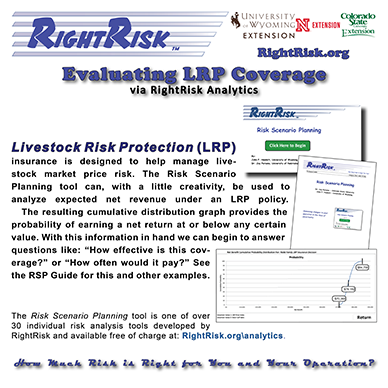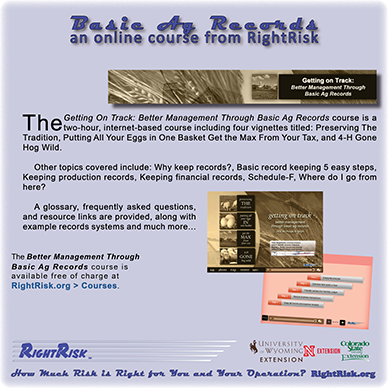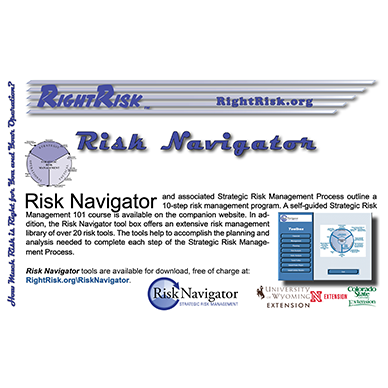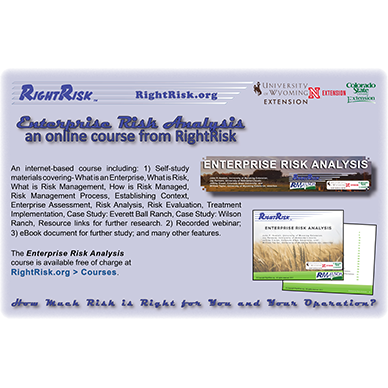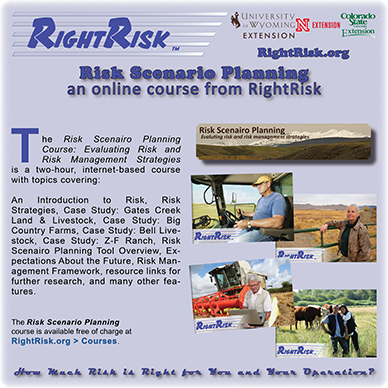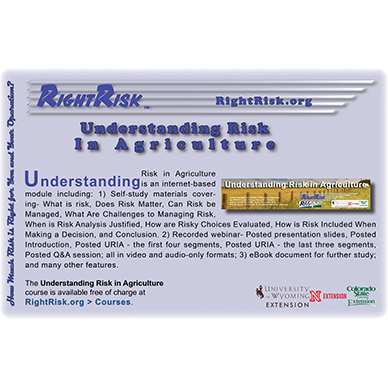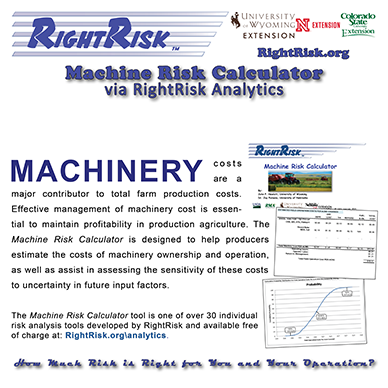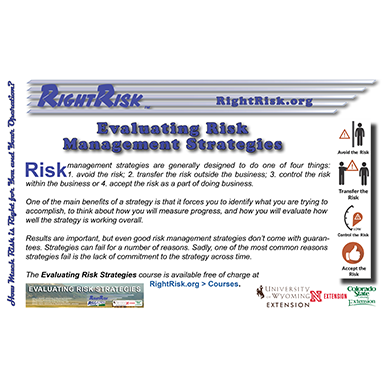LIVESTOCK RISK PROTECTION (LRP) insurance is designed to help manage livestock market price risk. The Risk Scenario Planning tool can, with a little creativity, be used to analyze expected net revenue under an LRP policy. The resulting cumulative distribution graph provides the probability of earning a net return at or below any certain value. With this information in hand we can begin to answer questions like: “How effective is this coverage?” or “How often would it pay?” See the RSP Guide for this and other examples.
The Risk Scenario Planning tool is one of over 30 individual risk analysis tools developed by RightRisk and available free of charge at: RightRisk.org\Analytics.
